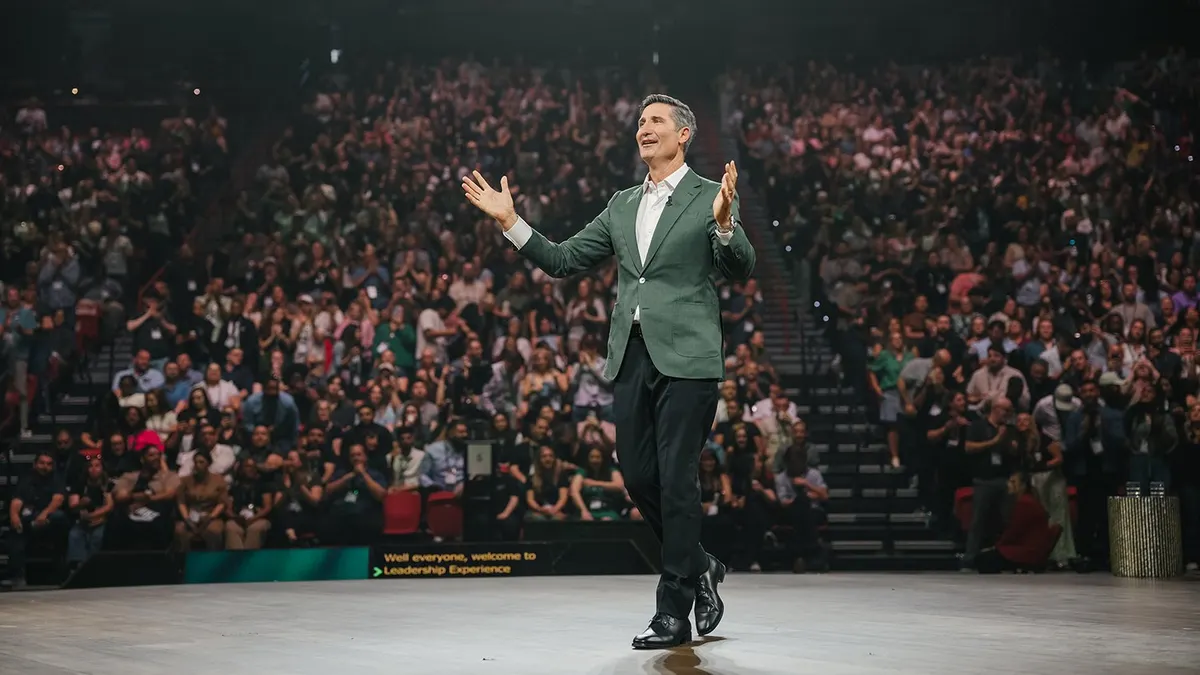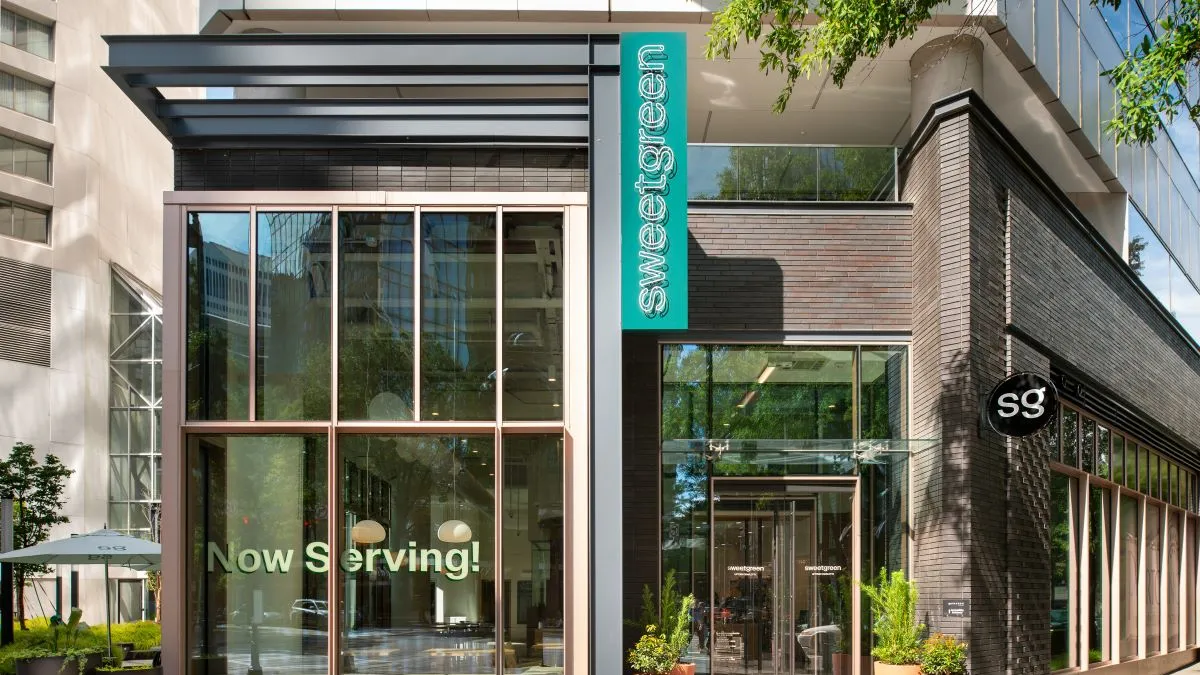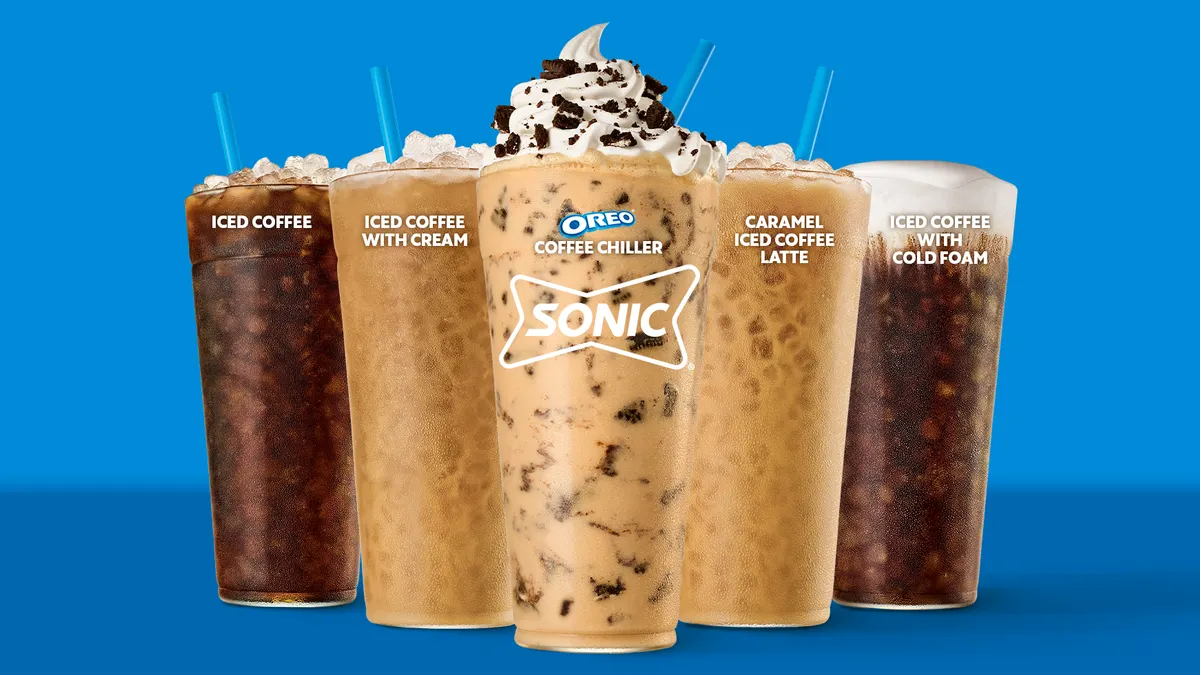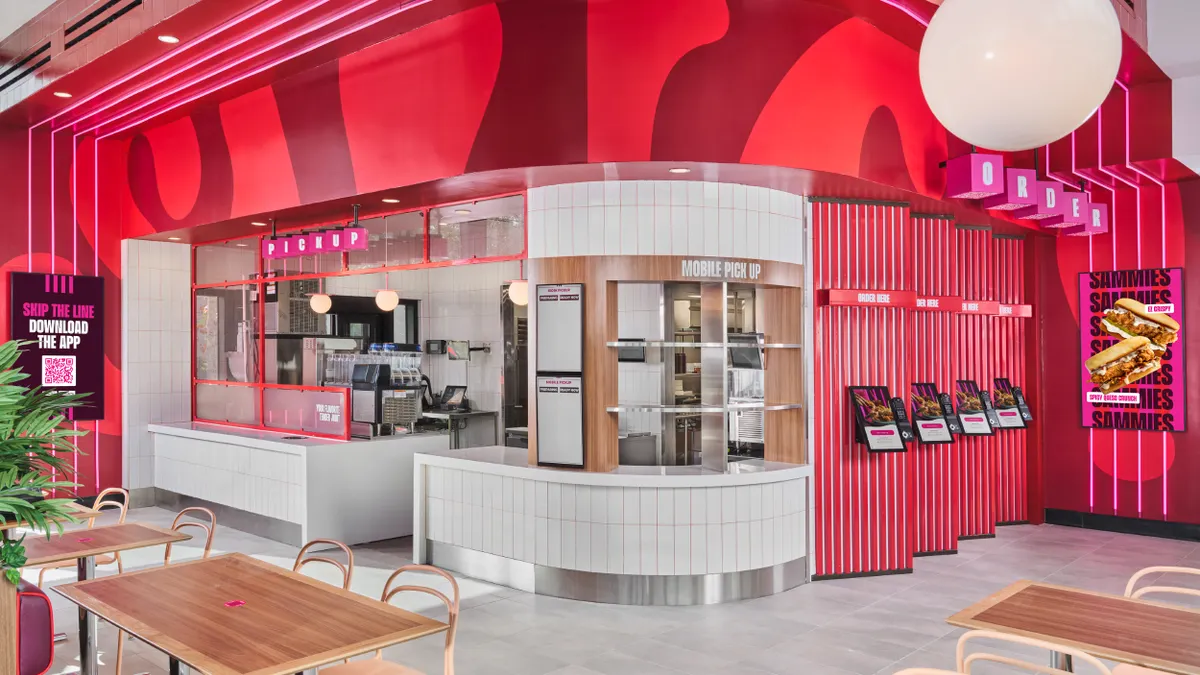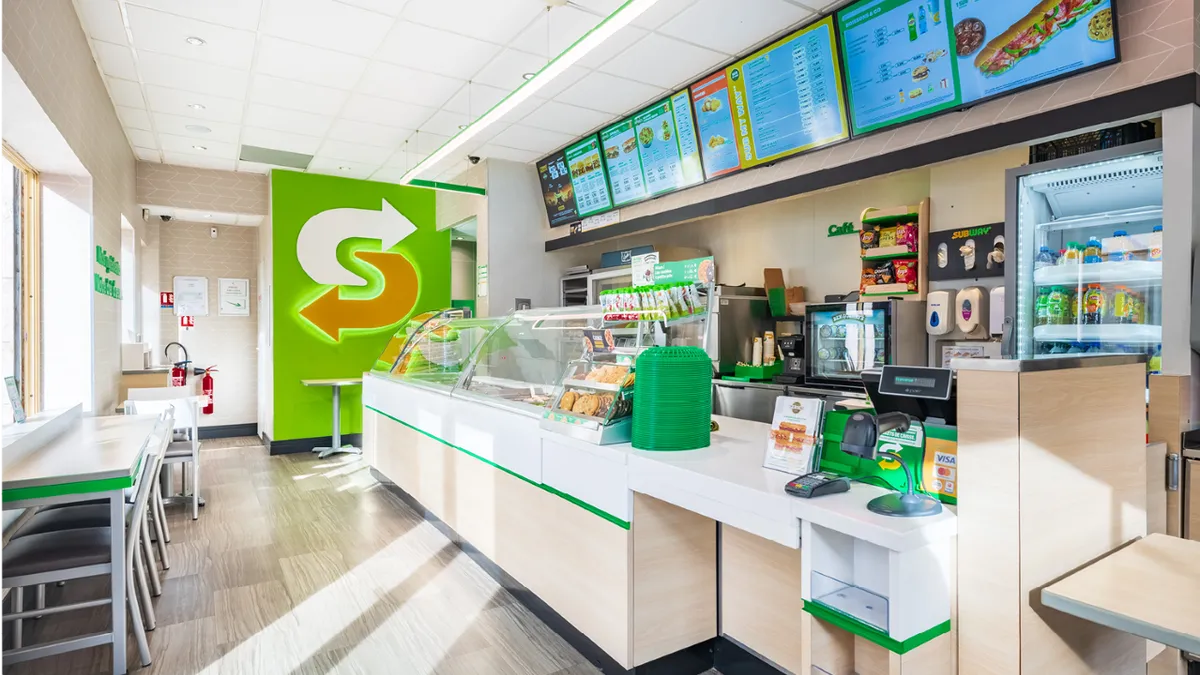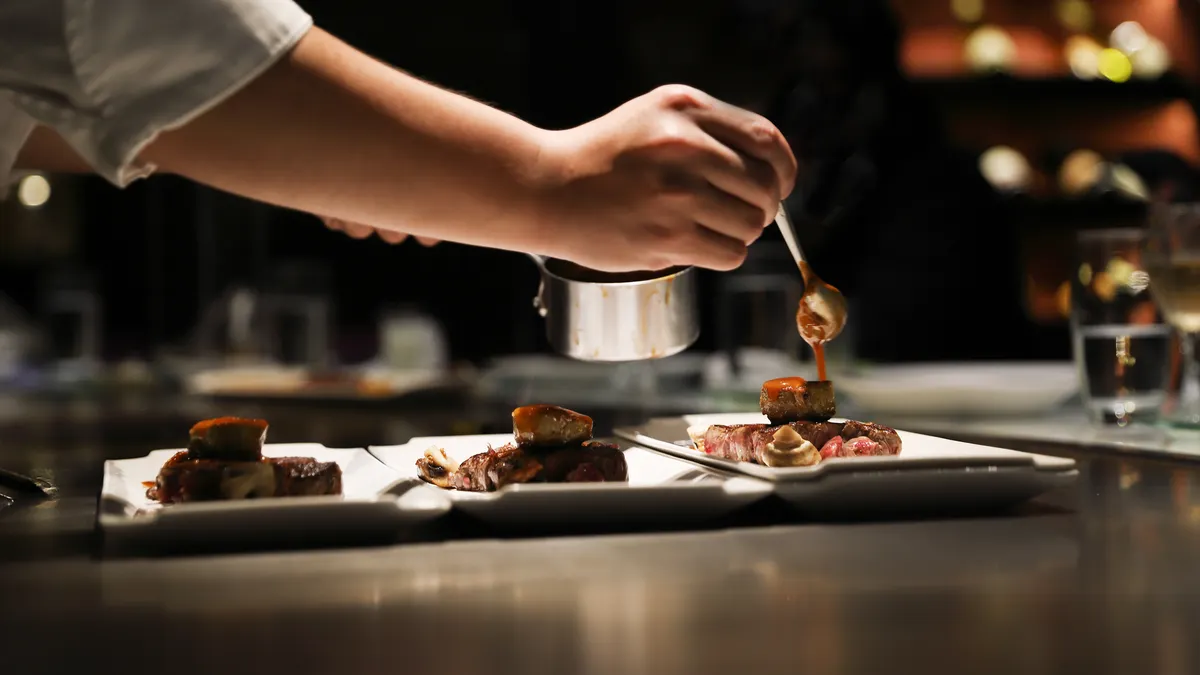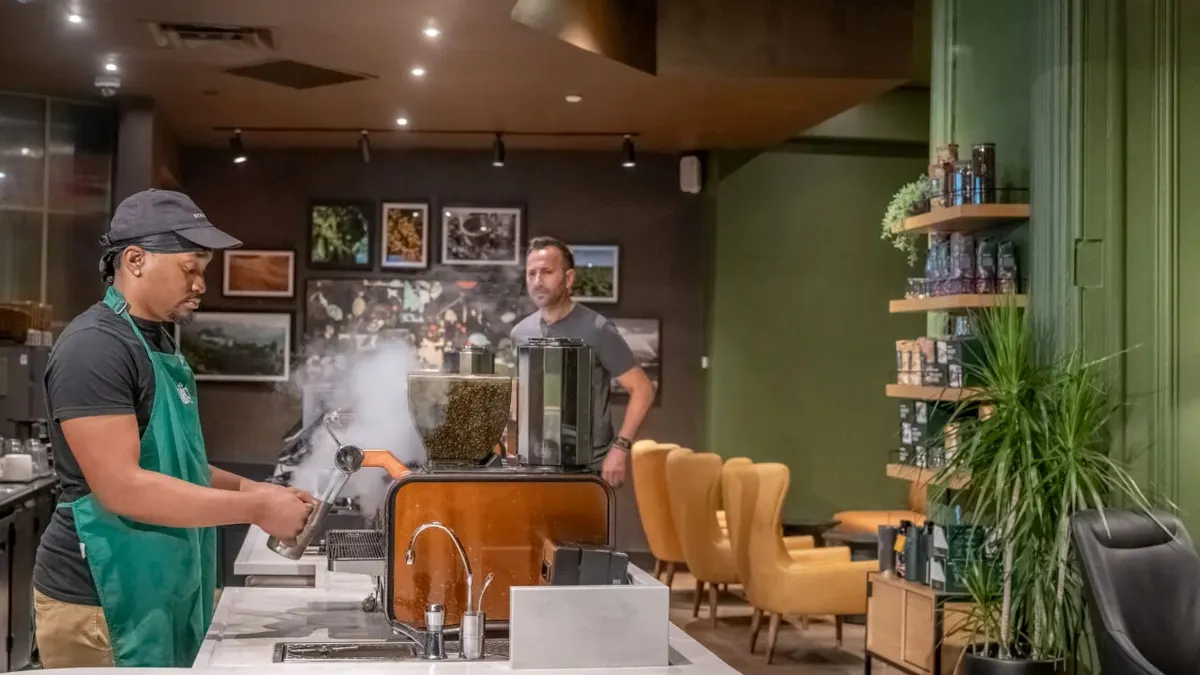When Dave’s Hot Chicken debuted seven years ago as a pop-up with a handful of employees , the minimum wage for a business of that size in its native Los Angeles County was $10. Fast forward to today, and the minimum wage for California fast food restaurants is $20 an hour thanks to AB 1228 — a comprehensive deal between organized labor and restaurant industry leadership.
Like many major restaurant brands, Dave’s is hoping price hikes and operational changes at its 40 California units — roughly 22% of its U.S. system — will soften the financial impacts of AB 1228.
To start, the chicken chain is raising prices 9% at its company-operated stores and has recommended California operators do the same, said Jim Bitticks, Dave’s chief operating officer and a franchisee with two California stores. About 90% of the brand’s Golden State restaurants have committed to that level of pricing.
“Our goal was to maintain the bottom line dollars, not the bottom line margin,” Bitticks said.
Maintaining the same percentage margin, as many other fast food chains are attempting, rather than the same dollar amount of profit would have required a much heftier price increase, he said.
“We don't want to gouge anybody,” Bitticks said. “We're mainly concerned with keeping the dollars intact, and we'll lose a little on the margin, truth be told.”
Dave’s has spaced out its price hikes. One increase — about 5% — took effect on Feb. 5, and another — about 4% — on April 1. The company has hosted several calls with its franchise system to discuss implementation of new pricing and “make sure everybody's lined up and ready,” Bitticks said.
The brand decided on the 9% pricing in part through a market test at five California franchised locations in the late fall. During that trial, Dave’s saw a negligible impact on sales and traffic, Bitticks said, though the data was “noisy” due to potential changes in sales caused by the holiday season.
Carolyne Canady, Dave’s chief development officer and a franchisee, participated in the pricing test and said her restaurants haven’t seen traffic declines due to the higher prices. Dave’s has made a point to involve much of its C-suite in franchise-level operations.
Canady said wages at her stores would increase from an hourly average between $17.50 and $18 to between $22 and $23.
“The employees know it's coming. And they're happy about it,” Canady said. “Nobody's going anywhere, I'll tell you that.”
Dave’s anticipates higher wages will draw some workers away from retail and help lower turnover at the brand, Bitticks said. Attrition percentage at Dave’s was in the mid-80s for a whole year, a competitive rate given annual QSR turnover rates can exceed 100%.
Dave’s kiosk test yields sales bump, no labor savings
The chicken chain’s AB 1228 survival tactics extend beyond menu pricing.
Dave’s began testing in-store ordering kiosks last year, Bitticks said, and three company-operated California stores currently offer kiosks alongside its traditional ordering channels. Tests have shown kiosks yield bigger checks, but not significant labor savings.
“We didn't see the ability to pull labor out of the restaurant, but we did see some positive impact on sales,” Bitticks said.
Dave’s labor deployment at the cash register — the position most likely to be replaced by kiosks — is already fairly small. The brand still needs workers present to assist customers with kiosks, in the same way grocery stores deploy workers to oversee the self-checkout process, he said.
Tickets placed at kiosks are about 7% to 8% higher than orders placed with an employee, Bitticks said. This increase is driven by greater orders of the brands’ entrees, and possibly by guests trying new items they notice on their own, rather than trying items based on conscious upselling.
Dave’s managers report customers across age demographics are using the kiosks, Bitticks said, rather than just younger diners.
It costs the brand about $5,000 to deploy two GRUBBR kiosks, plus installation costs of around $2,500. Monthly operational costs reach about $150. In total, two kiosks can cost up to $9,300 for the first full year.
Bigger drinks juice beverage margins, operators mull nixing tips
The chain has also added a 32-ounce drink option in several locations, Bitticks said, taking advantage of the traditionally high margins on beverages.
“We've seen a lot of customers purchase that [drink size], which is sort of a price increase, but not because it's like an elective price increase,” Bitticks said. The chain’s standard drinks are 20 ounces, Dave’s wrote in an email to Restaurant Dive.
At least one of Dave’s California franchisees is considering setting a higher base wage than the $20 minimum, but eliminating tipping, Bitticks said. This move would reduce the upfront cost of the wage change to consumers — by contrast, the industry has generally been clear that it intends to maintain margins by passing the cost of the wage hike on to consumers. Bitticks estimated that tipping at Dave’s contributes between $1 and $2 to employee hourly wages.
The wage deal may have been worth it
Bitticks ultimately said the deal between the Service Employees International Union and industry groups, which led to the passage of AB 1228, was positive because it averted the possibility of a strict joint employer law in California. That law, the original version of AB 1228, would have increased franchisor liability for a host of franchisee violations involving workers by holding that franchisors employ the workers of their franchisees. In the long run, Bitticks expects the financial impact for restaurant operators to be muted.
“[Minimum wage] has gone steadily up over the last 10 years,” Bitticks said. “We're still in business. Most of the businesses that were in business before that increase started are still in business. Ultimately, we will adapt and adjust, and so will the other businesses and so will the consumers.”
The fast food council mandated by AB 1228, which has the ability to recommend regulatory changes, began meeting in March. The council will determine stepwise increases in the sectoral minimum wage each year until its remit expires at the end of 2029.
The law limits those annual wage increases to whichever number is smaller: 3.5% or the consumer price index for the year. In times of high inflation, the minimum wage’s real value would thus erode swiftly, and in times of lower inflation, the law will still constrain statutory wage growth below growth in the cost of living, likely causing a moderate deflation in the value of the sectoral minimum wage over time.
“As long as we're not gonna start losing money, or can't pay the rent, or can't pay the bills, I'm more than happy to give people more money,” Bitticks said. “I don't want to default on any of our requirements. But other than that, I think it's good for the hourly workers.”









